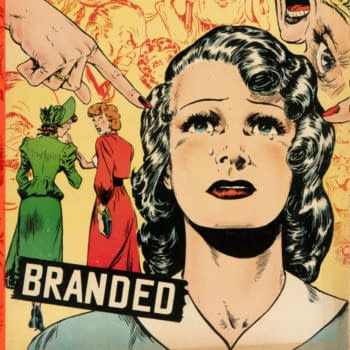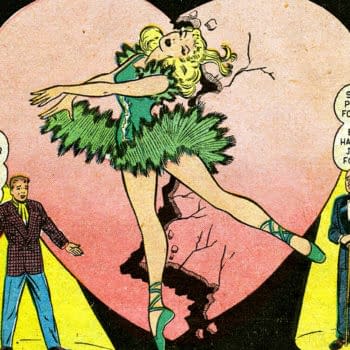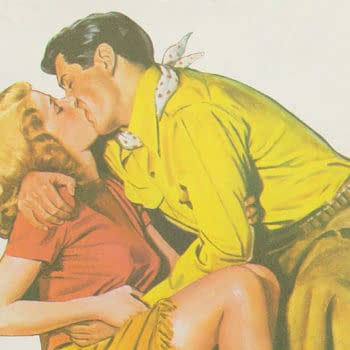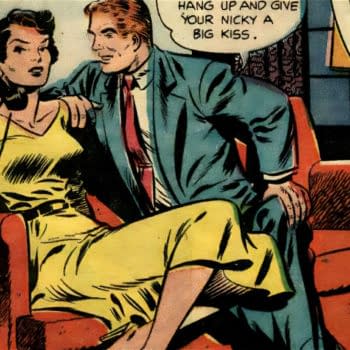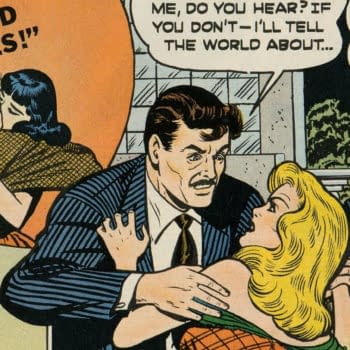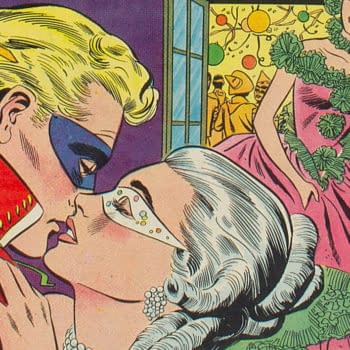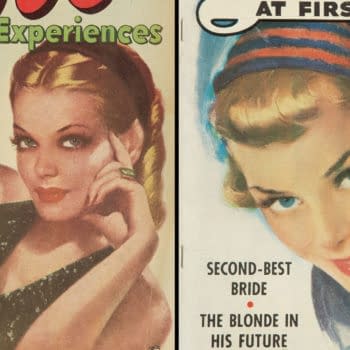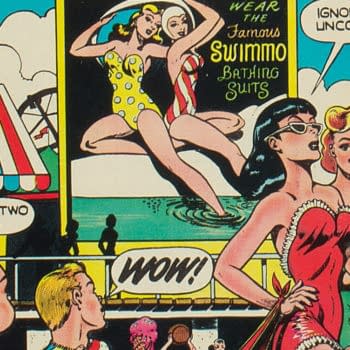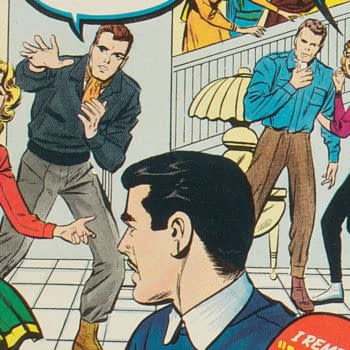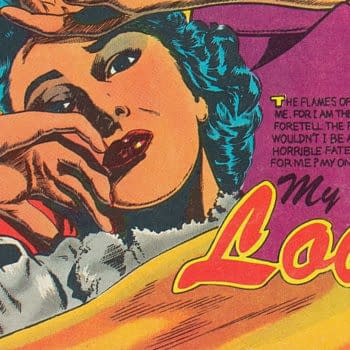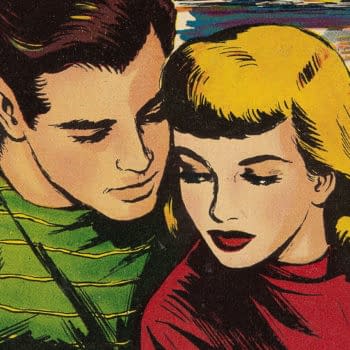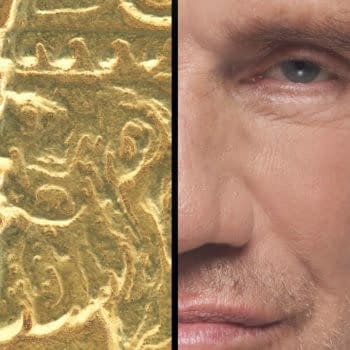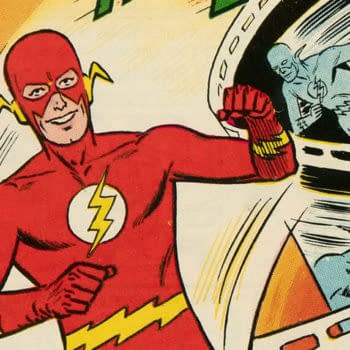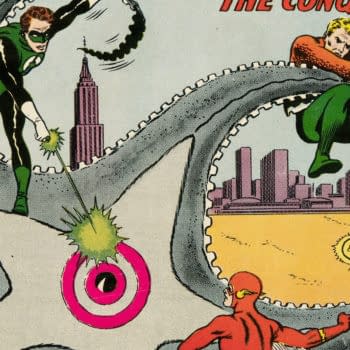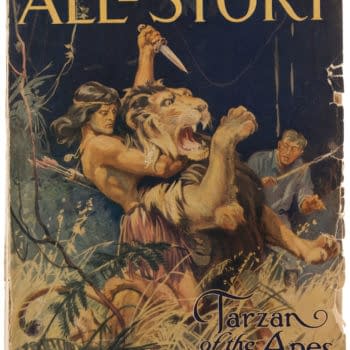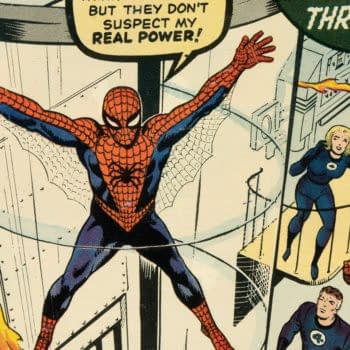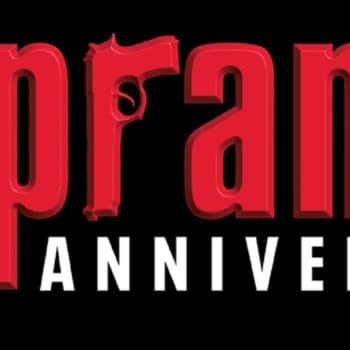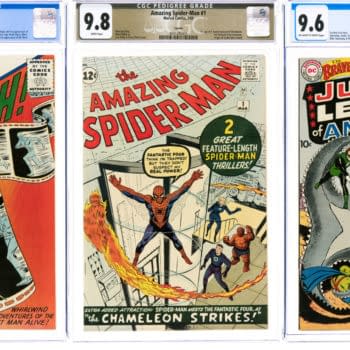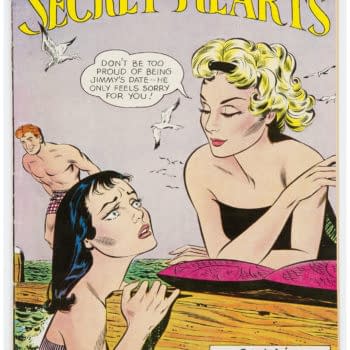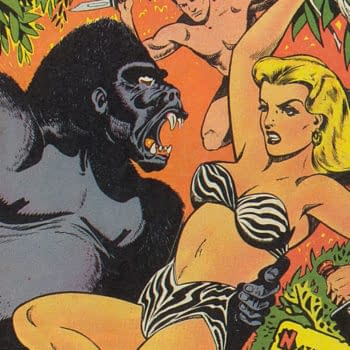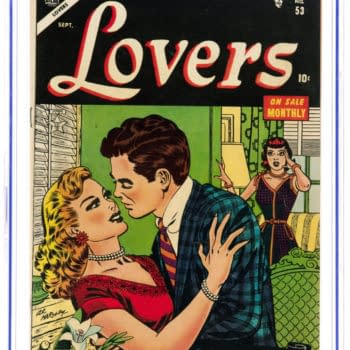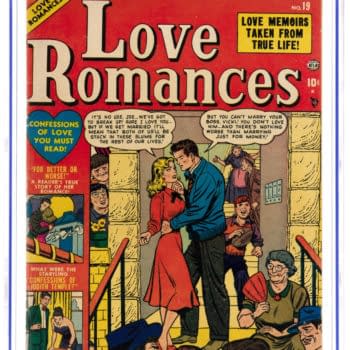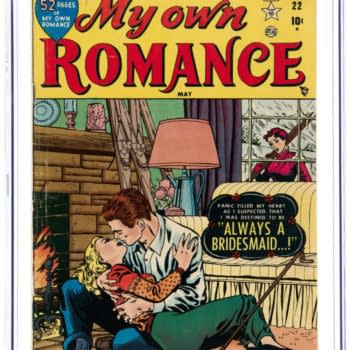Harry Anderson might be best remembered for his Pre-Code Horror Marvel/Atlas covers like Astonishing #32, but his Love Journal #10 is a stand-out.
Mark Seifert Archives
Debuting a year after Simon & Kirby's Young Romance, Marvel's My Romance was the second comic book romance title to hit the newsstands.
Frontier Romances #1 features a cover by Gloria Stoll Karn and an interior story with what Fredric Wertham called "Erotic Spanking"
With his interior work at St. John halted, romance comics legend Matt Baker tried out a number of other publishers including Charlton.
1950's True Secrets 3 (#1) was a title debut from Marvel/Atlas at a time when romance comics dominiated their comic book line.
DC Comics' underappreciated first romance comics title included work by Matt Baker, Alex Toth, Carmine Infantino, John Romita and more.
Remembered by history as a superhero and Pre-Code Horror publisher in comics, Ace Magazines also had a succesful romance comics line.
Standard Publications' Popular Teen-Agers started out exactly what it sounds like: a teen comedy like Archie Comics with L.B. Cole covers.
Jack Kirby provided 7 of the 8 covers for Marvel's July 1960 cover-dated releases, with his romance work sometimes overlooked by collectors.
The science fiction and horror covers of L.B. Cole are fairly well known, but his approach to romance covers is also fascinating.
Considered "one of the finest romance illustrators in the business" by a contemporary, Alice Kirkpatrick is an underappricated Golden Age artist.
Devil's Peak, a crime thriller series based on Deon Meyer's 2004 novel has been acquired by Tubi for the U.S. and Canada.
Get ready to rumble with A&E's wrestling-focused Sundays, featuring the return of WWE Rivals and Biography: WWE Legends starting Feb 25.
Challenge fate with Dolph Lundgren as he flips a coin for a 12-episode series. Is it odd or flipping fantastic? You decide.
The highest grade copy of Showcase #4 (DC, 1956), the first appearance of Barry Allen as Flash, has just gone for a record $900,000.
The debut of the Justice League of America in Brave and the Bold #28 has just gone for a record $810,000 at auction.
The debut of Tarzan by Edgar Rice Burroughs in All-Story October 1912 has gone for $264,000, an all time record sale for any pulp.
The highest graded copy of Amazing Spider-Man #1 CGC 9.8, the debut of an iconic Marvel series, has just gone for a record $1,380,000.
Dive into The Sopranos' 25th anniversary with Max for unseen clips, fan events, food, behind-the-scenes looks, podcasts, and more.
Focusing on Patriots' glory & strife, Apple TV+'s The Dynasty: New England Patriots kicks off Feb. 16th with new footage & candid interviews.
Pay attention to the details of Hulu's Death and Other Details for a mystery led by Mandy Patinkin and Violett Beane's sleuthing prowess.
Tina Fey reunites with 30 Rock collaborators for Netflix's The Four Seasons based on the 1981 Alan Alda classic - also starring Carol Burnett.
CGC has released updated information related to the incident involving an individual tampering with CGC Comics holders
Does the highest grade copy of Showcase #4 (DC, 1956), the first appearance of Barry Allen as Flash, have a shot at the $1,000,000 mark?
2024 starts with a bang on the vintage comics front, as top copies of Amazing Spider-Man #1, Showcase #4 and more hit the auction block.
Long-running DC Comics romance series Secret Hearts is one of the best-remembered romance titles in DC history, but it was almost a footnote.
L.B. Cole's Jungle Thrills #16 and its Phantom Lady and Rulah content brought this issue to the attention of the author of Parade of Pleasure
The Marvel romance series Lovers represented a changing of the guard in comics, as the series took over numbering from Blonde Phantom's title
One of Marvel's most succesful romance titles, Love Romances includes work form the likes of Jack Kirby, Matt Baker and Jerry Robinson.
Jack Kirby, Russ Heath, Matt Baker, John Romita Sr and many other familliar names contributed to flagship Marvel romance My Own Romance.



